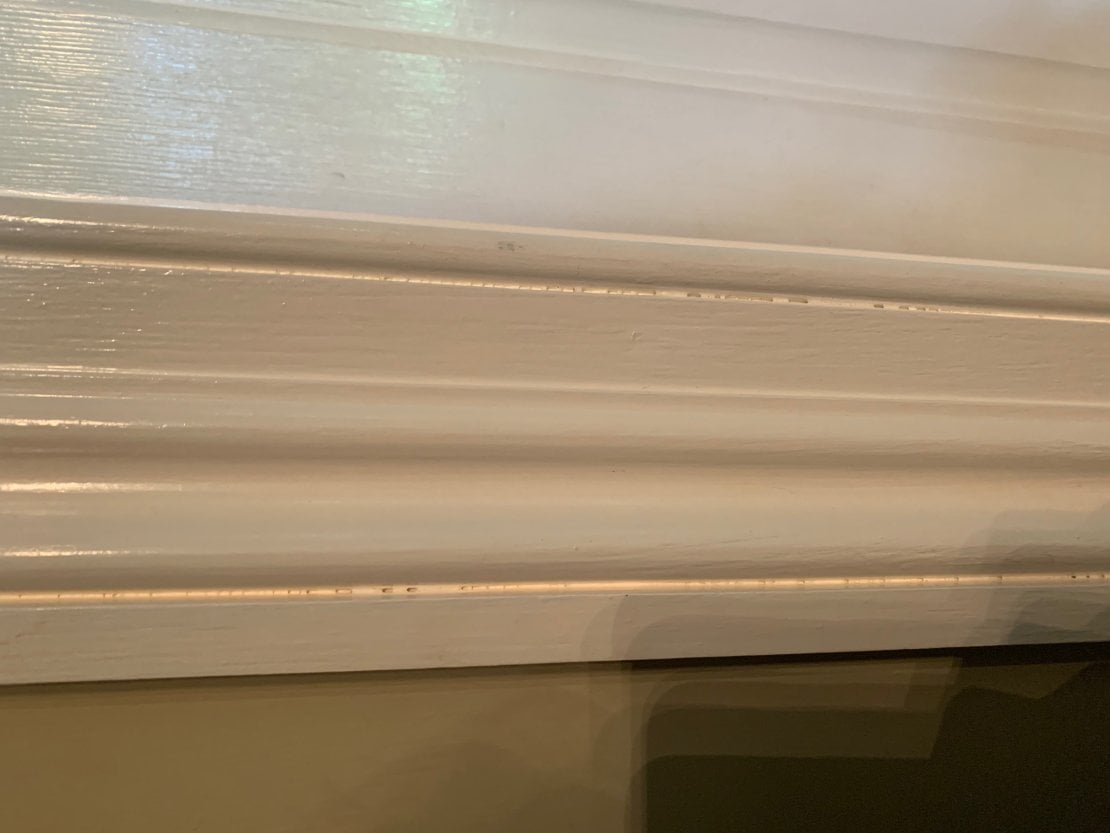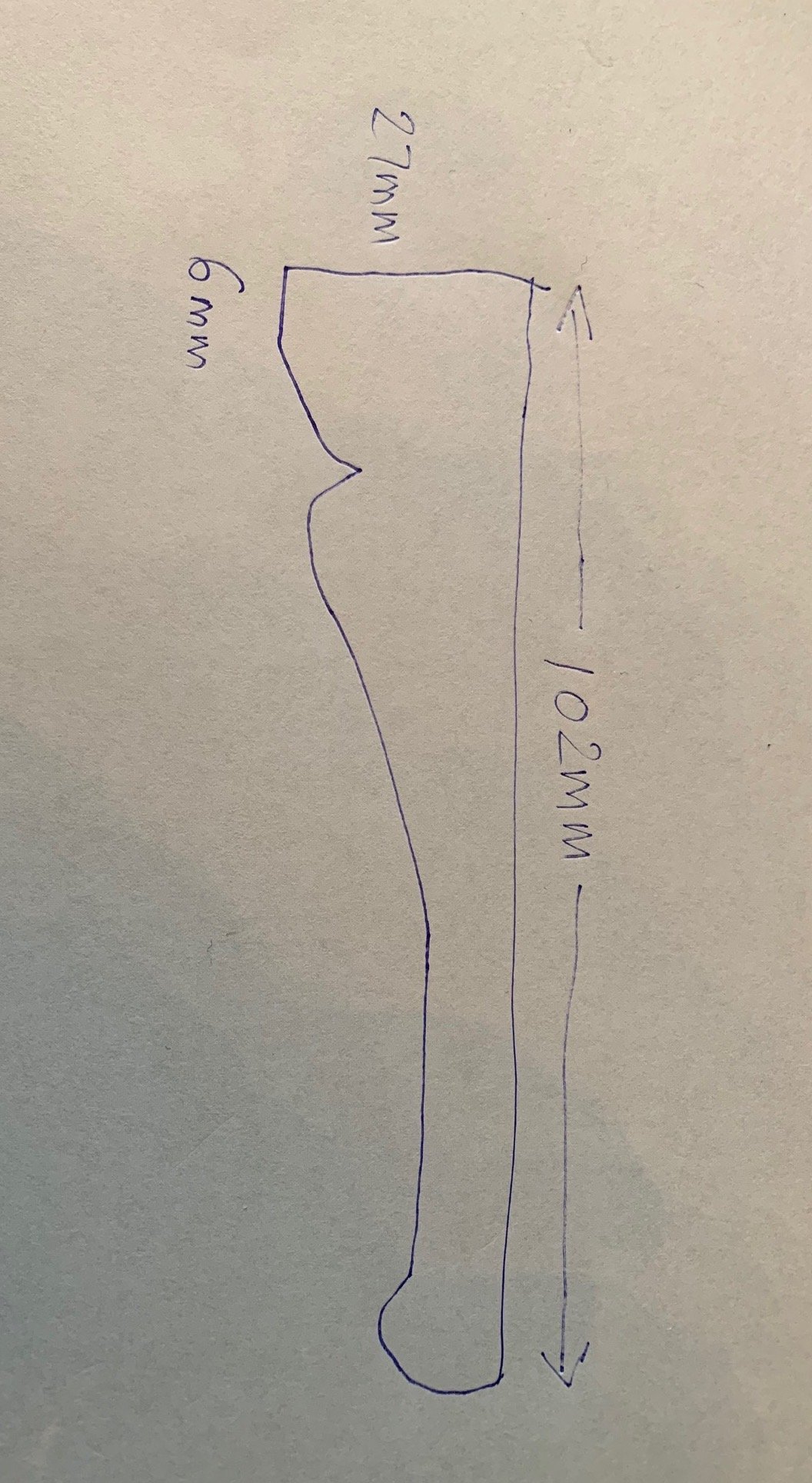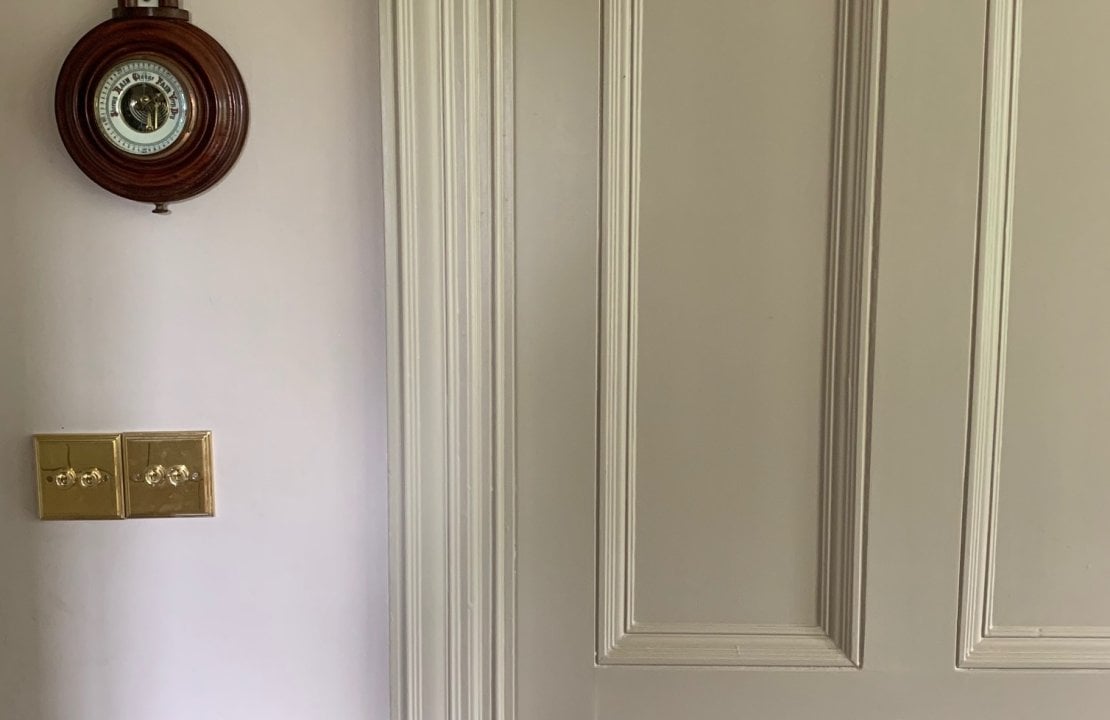When selecting which wooden mouldings, such as Victorian architraves, to use in your home there are a series of questions to ask in order to make the correct choice for your renovation. If you have existing architrave in the house you will probably wish to match this as closely as possible but sometimes it can be difficult to find a good match because the information you have when trying to find the match is not easily available.
From our side, if we are sent front on photographs of existing architraves, it is very difficult to tell from the photograph what the profile, design or size the architrave is. The more information you can provide, the easier it is to get help!

Example of the type of architrave photo we get sent
How can I show you the profile of my current architrave?
In order to have the relevant information about the profile of the current architrave to hand, you need to look at a side-on view of the architrave. This can be difficult if the architrave is around a door or window because your side on view will just show the square edge of the architrave. You could cut a slice out of the architrave and again look at a side-on view. This may not be possible as the architrave is in place and you don’t want to cause damage to it.
Therefore we suggest you follow this method to get a drawing of the profile.
- Measure the architrave moulding.
- Measure any straight parts of the profile.
- Look at the outline of the architrave and determine the length of the curves, ridges and straight parts. Then draw the architrave on a piece of A4 paper marking dimensions for each part of the design.
- You will probably end up with something a bit like this.

Once you have this drawing, you can easily compare this to other architrave profiles and line drawings to determine which is a good match.
If you cannot find an identical match to your architrave profile it’s probably not critical - the next closest match will probably do in terms of scale and the amount of detail. If you have a traditional Victorian architrave with curves, straight parts and bobbles, look for a profile similar to this and most importantly, of a similar size and thickness. If you choose a close match, once it’s painted, you probably won’t notice small differences in the profiles. Don’t mix architrave profiles on the same door or window but make sure you use your new architrave all around the door or window if needing to replace one part, otherwise, the outline will not meet up correctly.
If you have no architrave that you are trying to match, you are free to choose an architrave profile that you simply like the look of. The best thing is to order various samples and then hold them up on door or window openings to see what they look like. Take into account the size of other decorative wooden mouldings in your house. All mouldings should be in proportion so if you have a large ornate Victorian coving, choose a larger and more decorative architrave, traditional skirting, picture rail mouldings etc. Upstairs rooms tend to have smaller or simpler designs than downstairs rooms.
Our best selling architrave is product number 5883, which is Architrave 94x28mm. This seems to suit doors and windows in most period houses.

Be the first to add a comment...